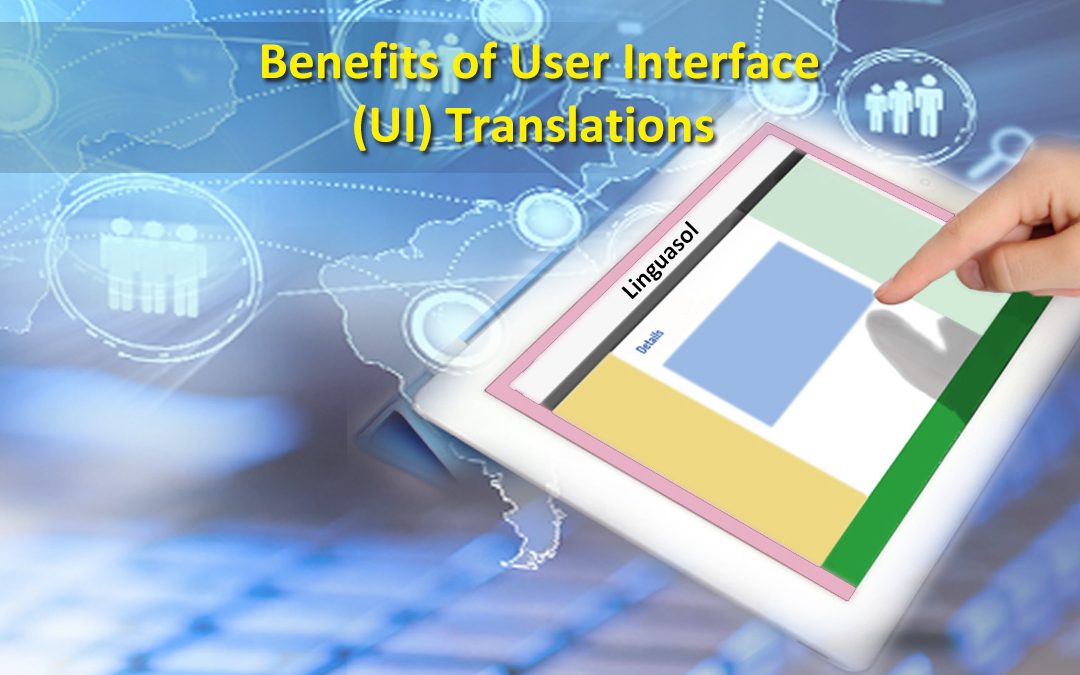The Internet is an evolving term and hasn’t stopped evolving since its inception, and amidst all the perpetual challenges, opportunities, and upgrades that the internet undergoes, language, even today, remains one of the biggest concerns. Of course, translation is a solution to it, but not as obvious as it may seem! There’s something called user interface (UI) translation, the benefits of which would form the nucleus of this blog.
Peeping into the Challenges of Lesser Concerns towards User Interface and User Experience
Challenges first, and then the benefits! So, let us take a look at the challenges of a website that isn’t user-friendly in terms of the language translation. Say, for instance, a user in Japan logs onto an English website operated by an English speaking banking and financial institution. Perhaps, if the user isn’t comfortable reading or understanding English, he/ she may hit the exit button, and search for some other, a more native website and web content, thus incurring a user loss, perhaps forever, unless an element of relevant user experience is added to it.
Obviously, for multinational banking and financial institutions with a global reach, yet a local connect, the above situation isn’t business healthy. Language translations run parallel to other essential factors such as website layout, navigational ease, etc. These are elements creating resonance with the users and making them comfortable while they blissfully scroll through the entire website. We aren’t denying the importance of rich and relevant content, but subscribing to the significance of the same content translated through a tool, but with a human ting to it.
Reading something in the local language, or precisely a language that your targeted audiences understand is imperative in order to create a local connect. Remember, globalization never works alone. In the wake of winning the world, we often tend to forget to act locally! And, this often takes a toll on the overall venture in the long run.
Benefits of User Interface (UI) Translations for Enterprise Software and Web Applications
The most important benefit here is the user-connect achieved through an impeccable, yet simplified user experience. Your website, say, for example, operates in multiple languages; especially those of your targeted audiences would create a deeper impact, than a rigid, single language one!
Believe us, UI translations are considered to be better connectors than the simple mechanical ones. Here, translation remains automated; however, the human-edition that the content encounters enroute makes all the difference, and creates an alliance with the user. As a result, you would propel yourself light years ahead of your competitors on all the fronts.
A global banking website, for instance, often offers translations for a particular webpage in multiple languages. These translations are aimed at relating with the targeted markets and further to increase the visitor to prospect and prospect to customer conversions. Besides, user interface translations also help the consumers read and access the information in an easier and organic manner, without having to translate a sentence more than once or seek a local perspective of a particular statement. So, in a way, user interface translations help users interact with the website and an interesting, and engaging interaction helps convert a simple visit into an online sale.
UI Translation and its Challenges
Needless to emphasize that transliteration doesn’t work every time, and in fact, it could turn disastrous, as every language has its own identity and fashion of expression. This isn’t the actual challenge though. Now that we talk about user interface and user experience, we’ve got to look at the text expansion part as well. For instance, the French word ‘main tenant’ is thrice as long as its English counterpart ‘now’. This is where text expansion becomes unavoidable. However, this is only one of the several longer words that could pose a challenge to the original layout of the webpage, when translated. But LinguaSol has got a solution to this.
LinguaSol, with its translation ingenuity, walks that extra mile to ensure that these challenges are taken care of in the most appropriate manner. It offers customized solutions to fulfill every diverse requirement of large banking institutions and global enterprises intending to establish relations with the local consumers. Linguasol’s related with these intentions and offers local translation expertise to create an organic user connect, with the highest levels of accuracy and quality delivered. It smartly blends mechanical intelligence with human understanding, thus augmenting the UX quotient of the website, and proving to be a better and competitive alternative when it comes to user interface translations.
Acting locally is going global in the truest and broadest sense. It involves a concern for the local users, thereby taking the website and subsequently the website to newer heights. For a detailed insight into the services details of LinguaSol, get in touch with the representatives at sales@linguasol.net.

